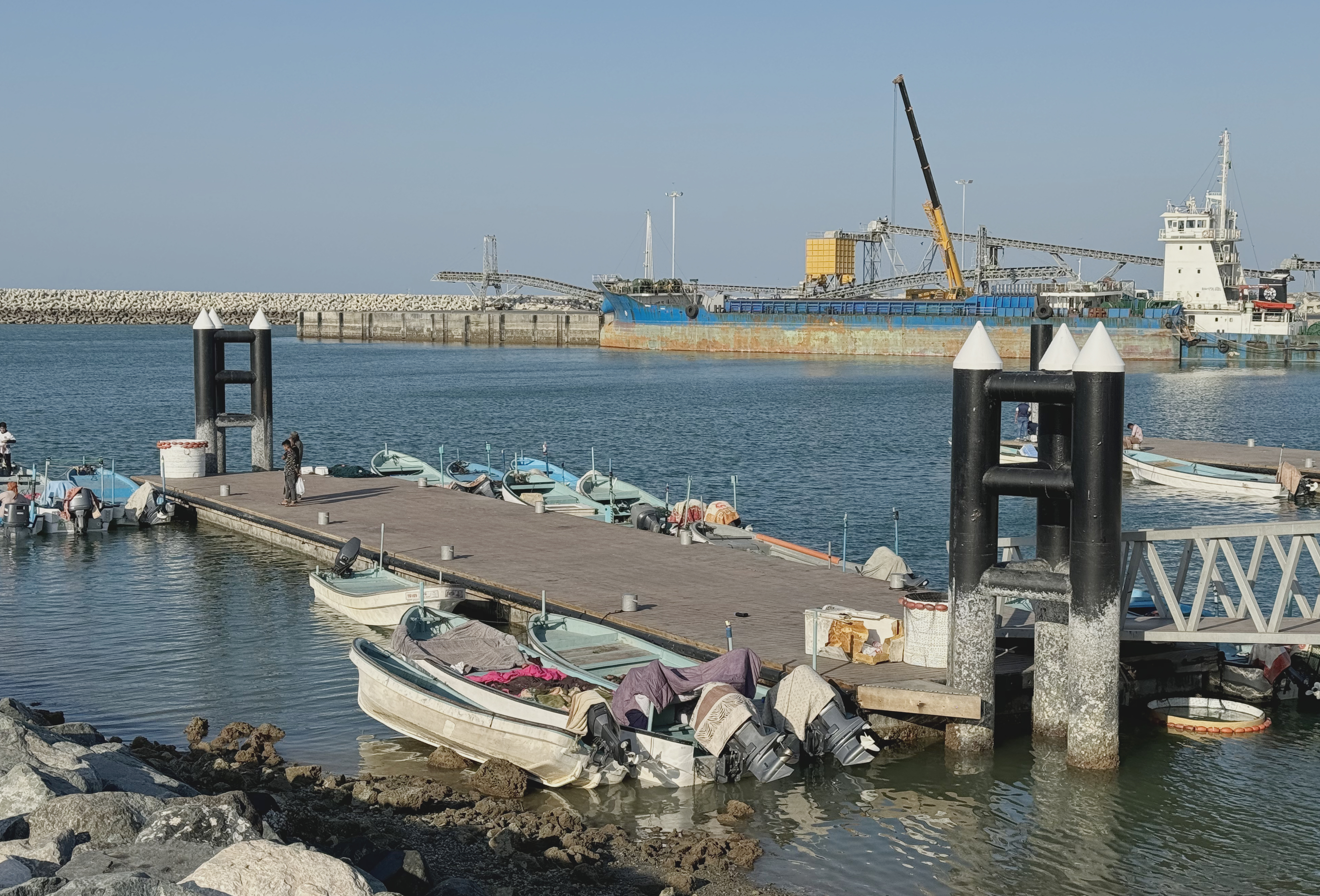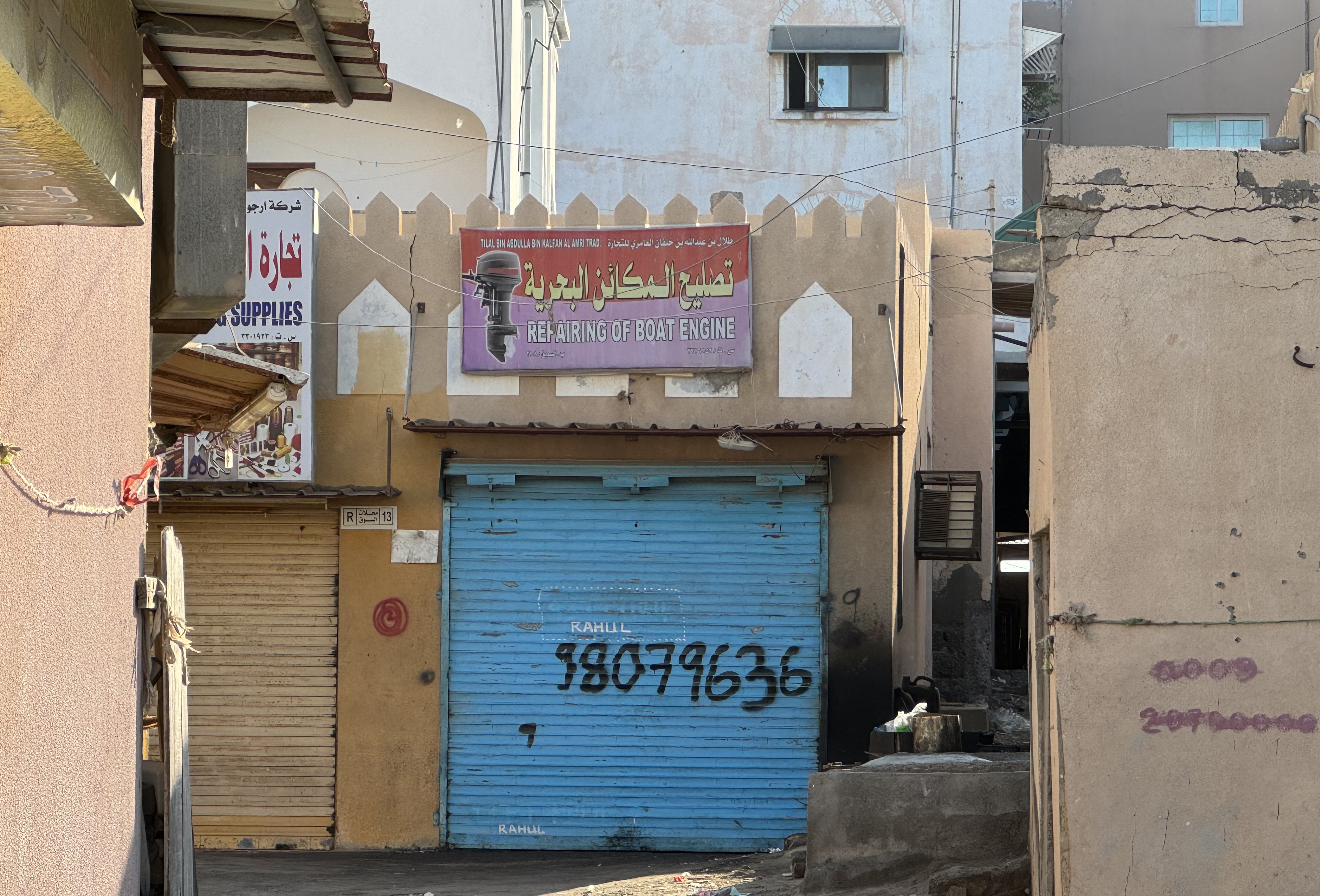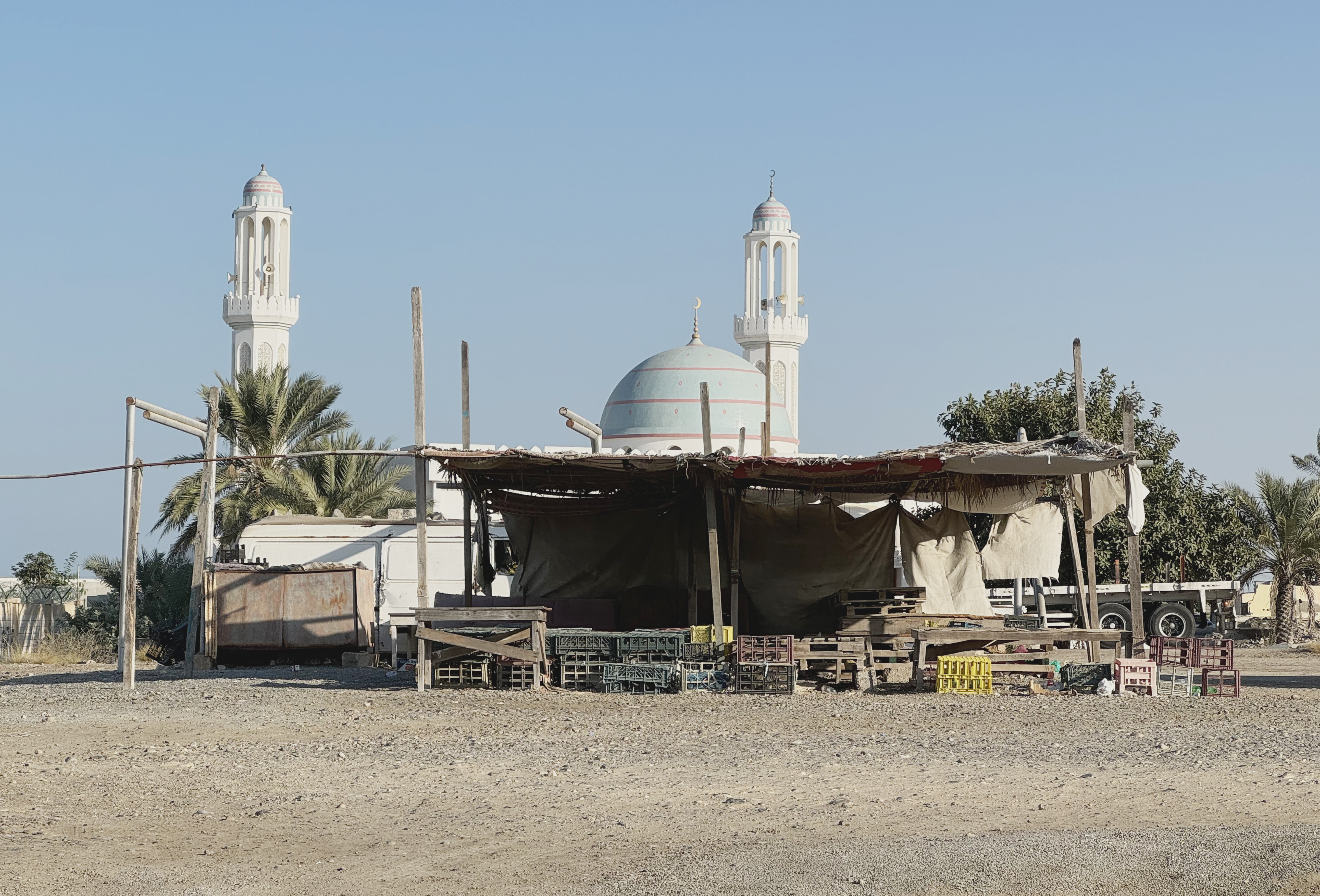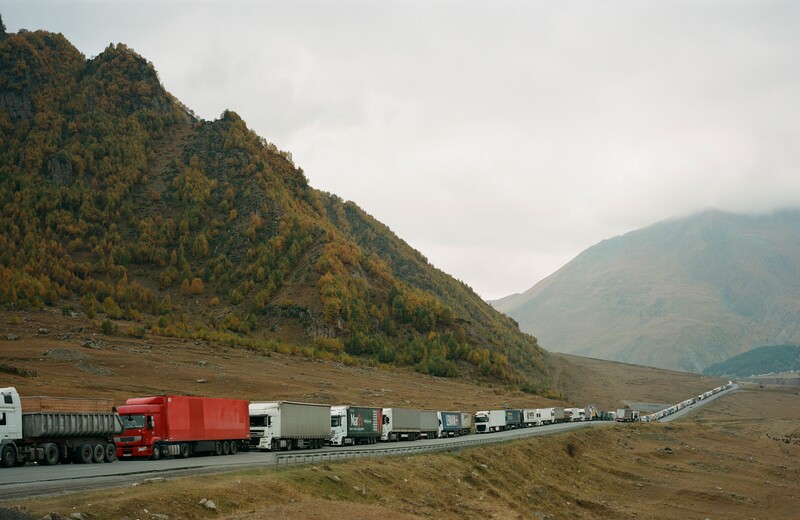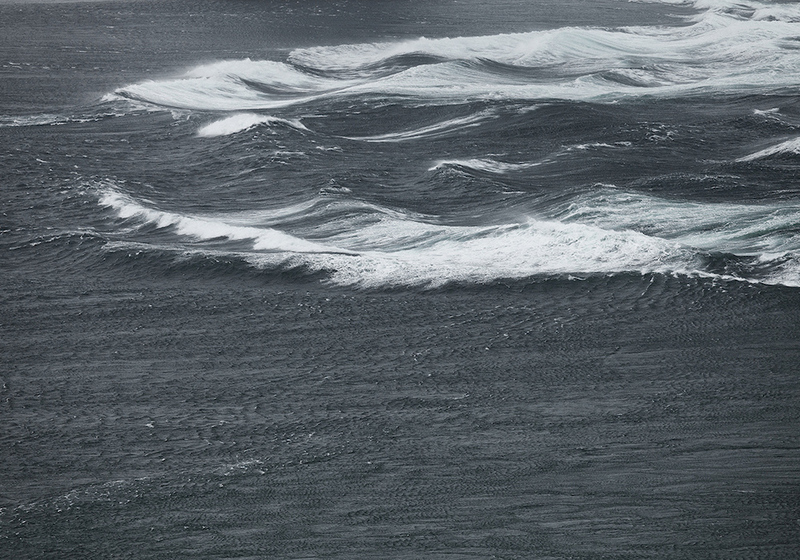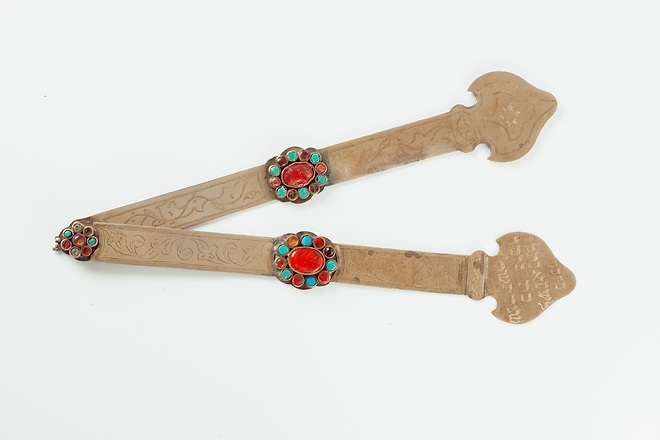
In a new, four part series for EastEast, the artist and filmmaker Rouzbeh Akhbari will be posting brief dispatches from his three-month research trip in Oman. These will include excerpts from fieldnotes, archival documents, photographs, and audiovisual materials. Akhbari’s interest in the region stems from his work on two related projects: research focused on how the International North-South Transit Corridor (INSTC) translates into local contexts near Iran’s maritime and terrestrial border zones, and an experimental documentary titled Point Rendezvou that follows the informal livestock trade between the Caspian and Persian Gulf littorals.
January, 2024:
Global supply chains have been crisis-stricken for months. In addition to the persistent threats posed by the IRGC in the strait of Hormuz, the Houthis in Yemen have launched a targeted campaign against cargo ships in the Red Sea, citing grievances over the ongoing occupation of Gaza. Despite claims that only vessels affiliated with Israel are being targeted, the escalating risks and exorbitant insurance premiums have compelled the vast majority of carriers bound for Europe to divert away from Bab al-Mandab.
I arrived in Muscat on the same evening that a coalition of Western navies carried out the first round of numerous bombardments in Yemen, supposedly to deter future attacks on critical shipping routes by the Houthis. While reading the news and browsing live maritime traffic maps over breakfast at a small café adjacent to the Sultan Qaboos Port, I stumbled upon a curious poster that advertised logistical services for anyone interested in exports to Iran. The ad was mounted rather inconspicuously in a back-alley behind a trash can, presumably because anyone caught trading with Iran can become a target of Western sanctions.

I came to Oman to conduct part of my doctoral fieldwork and film an experimental documentary that follows the informal livestock trade between the Caspian and Persian Gulf littorals. I was clueless as to where to begin the research, so I took the opportunity and called the number. In a matter of hours, I was having lunch with a friendly young man (I’ll call him Jeff) who was excited to learn about my research on regional trade and the historical geography of maritime shipping routes.
Jeff's discourse on logistics was nothing short of captivating. We delved into the escalating tensions gripping the region's maritime chokepoints, all while he shed light on Oman’s various developmental endeavors aimed at diversifying away from an overreliance on global shipping routes—that are vulnerable to the whims of geopolitical upheaval—and towards the cultivation of local and regional small to medium-scale trade networks. In particular, he illuminated the transformative upgrades underway at the ports of Al Suwaiq and Khasab, positioning them as exemplars of this strategic transition. He coined this shift in scale as a “new logistical revolution” or a “tactical devolution,” heralding a paradigmatic transformation in how ordinary individuals interact with logistical infrastructures and the flow of goods in and out of economically restricted zones such as Iran. Our thought-provoking exchange spurred me to embark on a trip the following day, with the port of Al Suwaiq as my inaugural destination, marking the commencement of a three-month journey across Oman.

Operated by the Asyad Group, Oman’s largest integrated logistics provider, Al Suwaiq specializes in relatively small watercraft (drafts of less than 5 meters). In an era characterized by states vying for supremacy through the construction of increasingly expansive deep-water ports tailored for the streamlined handling of containers with unparalleled efficiency, Al Suwaiq's unassuming harbor is not optimized for the mass movement of standardized cargo, but rather for the management of non-containerized and project-specific shipments, with a particular focus on the transportation of livestock and foodstuff.
Parts of the port are still under construction (hence much remains to be changed), but as it stands the harbor and the grounds in its proximity allow for mixed modes of land use, including more traditional and decentralized open-air hawkers markets, numerous cafes and sites of social reproduction, new food handling facilities, and a recently developed commercial plaza. Below are some impressions of the port and its surrounding environments:
I will conclude this dispatch by quoting a few lines from my field notes related to a conversation with a local semi-truck driver leaving the port later that day:
Male | 50-55 | Omani | Former fisherman and smallholder farmer
— The fish are too small now and the rain too unpredictable.
— Sowing season is pushed back by weeks every year. There is no point anymore . . .
— Has diversified his occupation by establishing a grocery shop to sell informally imported Iranian produce. Happy to transport the occasional cargo between the port and the Khazaen Free Zone.
— Believes Al Suwaiq will be prosperous “again!”
All images provided by Rouzbeh Akhbari
